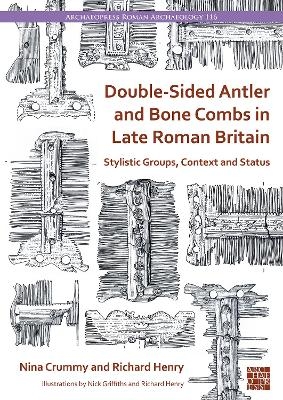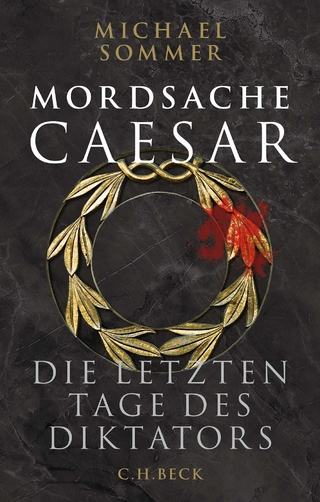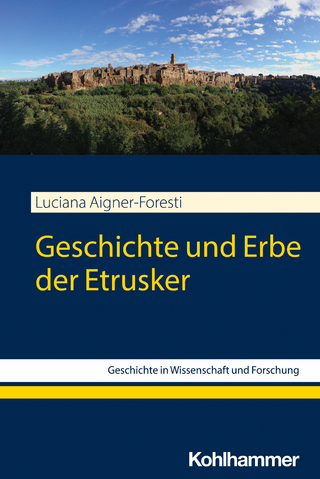
Double-Sided Antler and Bone Combs in Late Roman Britain
Archaeopress Archaeology (Verlag)
978-1-80327-644-1 (ISBN)
Double-Sided Antler and Bone Combs in Late Roman Britain offers the first detailed study and catalogue of a comb type that represents a new technology introduced into Britain towards the end of the 4th century AD and a major signifier of the late fourth- to fifth-century transition. Their end-plates were worked into a variety of decorative profiles, some clearly zoomorphic. Over time this decorative styling passed from elaborate to rudimentary, adding to the dating evidence for individual combs. As many combs survive only as small fragments, data collection has not been absolute but has concentrated on combs from burials, or with stylistically relevant end-plates, or those providing good dating or contextual evidence, the main aim of the study being to answer questions of typology, chronology and social distribution. A particularly distinctive feature within the assemblage from funerary contexts is the substantial number of these combs from Winchester, which together make up nearly a quarter of the wider British assemblage. It is proposed that a comb workshop was established in the town, and there is some evidence based on style and distribution that points to other workshops in the north and east, but these were not necessarily large and in some cases they appeared to serve only a local community, while Winchester and its hinterland appear to lie at the heart of the comb data.
Nina Crummy is an independent researcher working mainly on Roman small finds from eastern and southern England. Chiefly known for her work on small finds from Colchester, Winchester and Silchester. her research interests include zoomorphic objects and items made from skeletal materials. Graduating from Keele University in 1971, she has an MA from the University of Wales Trinity St David (2014) and is a Senior Visiting Research Fellow of the University of Reading. Richard Henry is a Doctoral Research Student at the University of Reading and Curator of Archaeology for Southampton City Council. A find specialist and numismatist, he has a particular interest in late Roman Britain and the 5th century transition. A graduate of the University of Wales, Lampeter, he gained an MSc from Bournemouth University (2016), where he is a Visiting Research Fellow. While the Finds Liaison Officer for Wiltshire, he curated the award-winning exhibition ‘Terry Pratchett: HisWorld’.
Preface and Acknowledgements
Chapter 1: Introducing the combs
The dataset
Terminology
The combs in a wider context
Combs and Winchester: a preliminary note
Chapter 2: Their date of arrival in Britain
The evidence
Anomalies explained
Contemporary material and events
Chapter 3: Manufacture and marketing
Manufacture
Marketing
Chapter 4: Aspects of the assemblage
Late Roman or Anglo-Saxon?
Other forms of composite comb used in late Roman Britain
An unusual variant
Chapter 5: Stylistic groups
Customised combs or devolved designs?
Horse combs
Dolphin and Devolved Dolphin combs
Owl combs
Straight-centred combs with long connecting-plates: very Devolved Dolphins/Owls
Concave-ended combs
End-plate groups and connecting-plate design
Chapter 6: Distribution and context
Distribution and possible production centres
Distribution by end-plate group
Archaeological contexts: baths, votives and burials
Site type
Chapter 7: Combs from funerary contexts
Gender
The importance of age
Female status and identity
Comb position
Body position
Ethnicity
Chapter 8: Conclusion
Concentrations and gaps
Burial data and typology
Valued objects, further research
Catalogue
Combs from inhumation burials
Other combs from cemeteries (disturbed grave goods?)
Combs from non-funerary contexts
Sites with double-sided composite combs not in the catalogue but used in Figure 6.1
Appendix 1: Combs by the sex and age of the human remains
Appendix 2: Concordance by end-plate group
Appendix 3: Concordance by site type
Bibliography
| Erscheinungsdatum | 18.05.2024 |
|---|---|
| Reihe/Serie | Archaeopress Roman Archaeology |
| Illustrationen | Nick Griffiths |
| Zusatzinfo | 60 figures, 12 tables |
| Verlagsort | Oxford |
| Sprache | englisch |
| Maße | 205 x 290 mm |
| Themenwelt | Geisteswissenschaften ► Archäologie |
| Geschichte ► Allgemeine Geschichte ► Altertum / Antike | |
| ISBN-10 | 1-80327-644-4 / 1803276444 |
| ISBN-13 | 978-1-80327-644-1 / 9781803276441 |
| Zustand | Neuware |
| Informationen gemäß Produktsicherheitsverordnung (GPSR) | |
| Haben Sie eine Frage zum Produkt? |
aus dem Bereich


